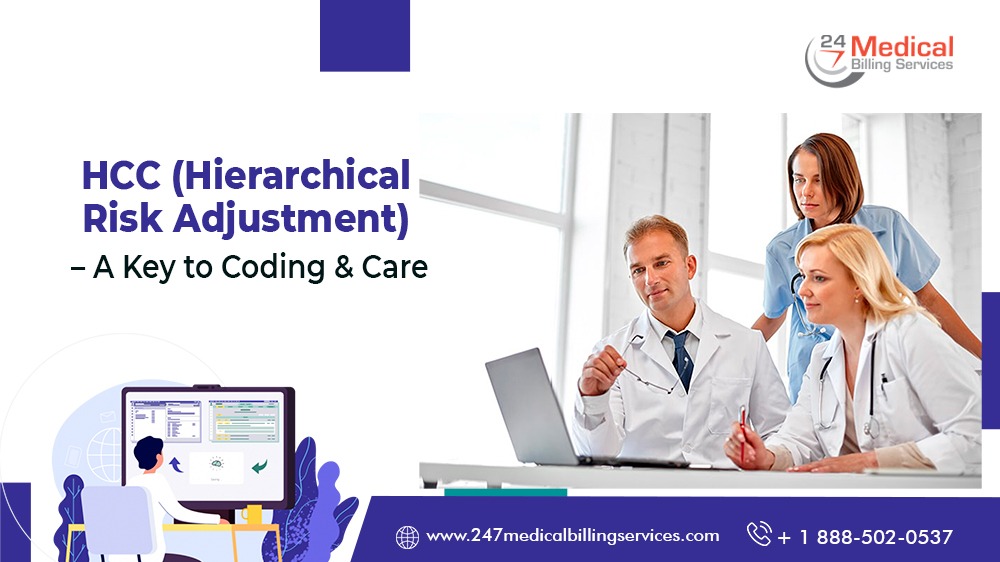
HCC (Hierarchical Risk Adjustment) – A Key to Coding & Care
The methodology used by various governments and payers to adjust revenue based on the diversified health status of the covered population is known as risk adjustment. There are numerous advantages to HCC Risk Adjustment, including adequate funding, aligning incentives with rewards (the triple aim outcomes), and optimizing quality and efficiency.
HCC Review is the process of extracting insights from voluminous data to identify coding gaps or errors that result in an inaccurate assessment of the patient's clinical profile. In other words, it can be defined as the process of ensuring that the clinical condition complexity of patient segments is as accurately documented as possible.
The first step in the HCC review is to collect and aggregate data from various sources, including RX Claims, Medical Record Reviews, Hospital Claims, Provider Claims, in-home assessments, and other supplemental data files such as ADT (Admission, Discharge, and Transfer). Typically, this data is available through the EMR, and no aggregation is required.
Cardinal Rules of HCC Coding
There are some fundamental rules for coding patient data that serve as a baseline for the initial HCC review:
Documentation of existing conditions: A review determines whether the condition is correctly coded or whether the coded condition exists.
Diagnoses are episodic and do not carry over from one visit to the next: A patient with a missing limb must be recoded again within the next year, or the system will believe the patient grew a limb.
Multiple times coding: For relevance, accuracy, and recency, the exact condition can be coded multiple times.
Other rules: Co-existing conditions provide a complete picture of the patient and should be coded together.
The coders must review medical records to stratify and identify patients with HCC conditions who have a better chance of having their conditions accurately reflected.
HCC Review Types
The following are the different types of HCC review processes that the providers can follow to ensure HCC coding accuracy and submission of clean claims:
Prospective Review: It assists providers in preparing for scheduled/upcoming patient encounters.
Concurrent Review: Like real-time review, HCC coders assess the patient chart, clinical notes, and HCC codes before submitting claims to payors but with some lag. Emerging technology may enable concurrent review in real-time.
Retrospective Review: This type of review is usually performed several weeks or months after the patient encounter and claims submission process has been completed. The goal is to conduct a post-audit and potentially uncover unreported and incorrectly reported HCC codes.
Best Alternative:
You can combine prospective and concurrent reviews to ensure accurate documentation and claims. Prospective review is a good practice as it allows providers to take full advantage of the upcoming patient encounter and the "right at the first" accuracy of their prospective claims. In fact, it boosts the likelihood of better and more accurate documentation to avoid duplicate work or others. That’s why prospective reviews should be given more weight, which can be combined with concurrent reviews to grab any breadcrumbs that may cause errors.
Another application for HCC review is when technology enables providers to evaluate the effects on patients who have not visited them in a long time. Although it is difficult to accomplish this manually, new technologies have enabled us to prompt providers to contact these patients for a visit, enhancing clinical outcomes and a practice's financial performance.
HCC Coding Framework Types
The Centres for Medicare & Medicaid Services (CMS) created the HCC model in 2004 to estimate the potential healthcare costs that a patient may incur and ensure value-based payment methodologies for them. In the United States, different risk-scoring models are currently in use. Let’s have a look at the two most commonly used categories:
- CMS-HCC
- As the name implies, it is a CMS-based HCC model used for risk adjustment in the Medicare Advantage program.
- It is intended for patients over the age of 65 and those who are disabled.
- CMS-HCC is essentially a prospective model that uses a patient's diagnosis from the previous year to forecast their healthcare costs for the following year.
- Regular Medicare processes are used to collect the patients' data.
- The risk adjustment for these patients considers factors such as their demographics, health conditions, and institutional status.
- HHS-HCC
- As the name implies, it is an HHS-based HCC model used for risk adjustment of commercial payer populations.
- It is designed for patients of all ages.
- HHS-HCC is essentially a concurrent model that requires patients' current benefit year diagnoses to determine their medical and drug expenditures for the same year.
- Risk factors for these patients include their demographics, health conditions, and financial situation.
Why is HCC Coding Important?
Correct diagnosis coding is indeed essential, but it is vital for accurate risk adjustment as it drives appropriate provider reimbursement in value-based payments. Always coding to the highest specificity is a simple "best practice" to implement. Unfortunately, Electronic Health Records (EHRs) make this more difficult because the search list for diagnosis codes frequently places unspecified codes at the top of the list. To overcome this obstacle, the best strategy is to approach 24/7 Medical Billing Services working as a team of professional HCC coders with the updated information and regulations.
Read more: HCC Coding: 7 Things The Most Successful Medical Groups Have In Common

.png)